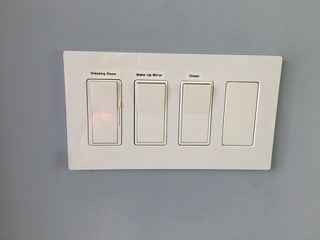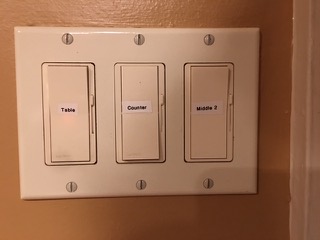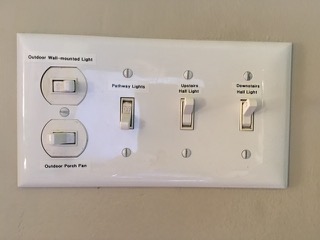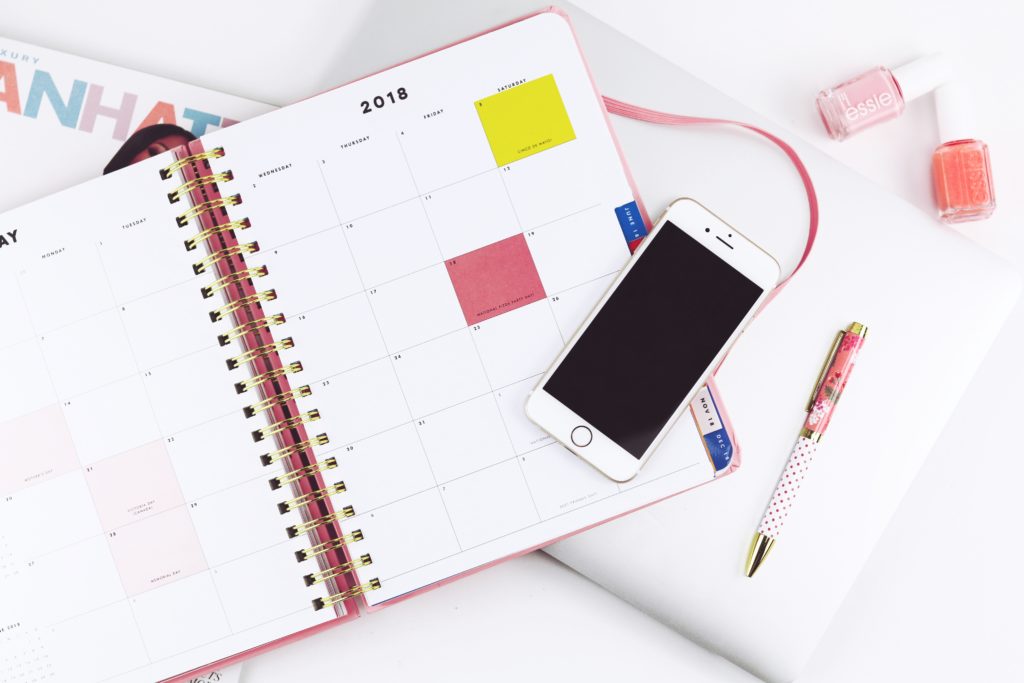Why are some people able to get more done in less time? What’s their secret?
No secret. They’ve mastered how to manage their time.

What is Time Management?
Simply put, it means to effectively manage your time to do what needs to be done on time. Most people feel overscheduled, do not plan their time well, spend too much time on unimportant tasks and so on. It’s not a time issue; it’s an organizing issue. In most cases, proper time management is lacking.
“I definitely am going to take a course on time management…just as soon as I can work it into my schedule.” ~ Louis Boone
To maximize productivity, you must know and apply effective time-management systems and tools that work for you. Here are some proven ways:
Organization
If you’re disorganized, you cannot maximize your productivity. Your first step is to get organized.
Eat That Frog
“The first thing you do each morning is to eat a live frog.” ~ Mark Twain
The “frog” is your toughest, most important task. Twain’s point was to get it done first each morning and the rest of the day should be easier.
Task Batching
This means scheduling time to do similar tasks. For example, reply to emails from 2:00-3:00.
Active v. Productive
There’s a huge difference between busy and productive.
“Do not confuse motion and progress. A rocking horse keeps moving but does not make any progress.” ~ Alfred Montapert
I recommend watching this three-minute video, which nails it. It’s meant for older folks with ADHD but everybody can relate.
Multitasking
Forget it. According to Forbes.com, 98% of us don’t multitask well. We’re actually just shifting between tasks which takes our brain time to constantly refocus. Studies show multitasking can reduce productivity by as much as 40%. However, I say it works when one task is mindless and your focus is on the other one.
Procrastination
Delaying inhibits productivity. Be intentional, positive and focused on your objective.
To-Do List
Use one! It’s critical to note tasks in one place, on paper or your device, so you don’t forget.
To begin, implement one or two tips. Practice until they’re routine. Repeat. There’s no shortcut but, over time, you’ll accomplish more in less time. That means more time to spend at work, with family, to read a book, do yoga or on whatever you want!
© 2019 Adriane Weinberg. All rights reserved.
Ahhhh, can you hear it? Stop. Listen closely. Is that the sound of an empty house? Oh my goodness! Are you actually at home – alone? That’s right folks. The kids are back to school and that morning cup of coffee hasn’t tasted this good in almost longer than you can remember.
Thank you Fall for showing up – right in time to save us from completely losing any semblance of sanity! While you sit for an extra 5 minutes, enjoying the sound of silence and taking another sip-o’-joe, you may begin to look around.
What you are looking at is the aftermath of summer:
Amidst everyone else’s debris, there are some of your own items that need attention, yet it’s hard to know which and where they are. Here are 3 suggestions from a Professional Organizer and mom of three grown children:
Take these three small steps and enter Fall confidently prepared to harvest the rewards of the season.

People hire organizers because they feel their lives are out of control and they are unable to get organized on their own. Frequently the problem is simply having too much stuff to organize. Often the weight of too many possessions can wear us down. When our space is cluttered and dis-organized it can impact every facet of our lives.
When the burden of too much clutter is lifted from our shoulders, we can feel physically lighter, more energetic and less stressed. This relief can lead to increased work productivity, greater enthusiasm and better relationships.
The question we need to ponder is why do we purchase so much in the first place? There are a number of explanations for this compulsion. Often, we simply want to possess the latest and greatest stuff because we think it’s fun to own! We live in a consumer culture and we often validate ourselves by what and how much we can accumulate. Consumerism and materialism are promoted by advertisers in print and on TV and computers in the form of commercials. According to Annie Leonard who wrote, “The Story of Stuff”, the two main activities Americans engage in are watching TV and shopping. We are bombarded by advertising and are exposed to approximately 3,000 ads per day. We see more ads in a day then people saw in a year 50 years ago. Couple that with the fact that the average house size has doubled since the 1970’s and it becomes easy to see why we accumulate so much “stuff”.
Sadly, in order to maintain our lifestyles of consumption, many people are working 50+ hours per week. We work until we are exhausted and depleted and then we shop to make us feel better. We return home too tired to do much else than watch TV and the cycle begins anew!
Is this the way we really want to lead our lives? If so, fine. If not, then it’s time to rethink our goals and blithely step off that hamster wheel of consumption and examine saner options.

As an organizer, I always follow my client’s lead and only suggest we work on areas THEY identify. Every once in a while, though, I notice an irritating situation that could easily be solved with a label.
This scenario came up a month ago while working in someone’s dressing area: her space has a number of zones with specific task lighting tied to a central panel.
As we were leaving the space, she went to turn off her make-up area light. Not knowing which switch controlled which light, she ended up flicking every switch, one by one, until she found the ONE she needed. Her heavy sigh told me this issue is chronic.
So we fixed her problem — right then and there.

Now, if you know the story of the cobbler whose kids went barefoot, you will understand that just because I see “problem areas” in other people’s homes all day, this does not guarantee that I am a ruthless problem-solver in my own home.
Spoiler alert: not every shelf, bin or basket in my home is labeled!
Truth is, not every shelf, basket or bin NEEDS to be labeled. If it is obvious what it is and if no one is having an issue finding what they need, then there is no problem. But confusion breeds stress.
That same day, I went home and noticed myself doing the same thing to two of our three kitchen switches. That’s when I decided to do for myself what I do for others! So I labeled our switchplate. It’s been a game changer. The only thing I had to tweak was what I called them; my daughter did not think “door” made sense so we revised the label and now everyone is happy.

Our kitchen is the hub of our home, but now that the weather is warmer, we are spending a lot more time on our front porch.
Fast forward to the other day, when my husband texted me to make sure I turned off the front pathway lights. Our guests had stayed late the night before, and he didn’t want to waste electricity. In the daylight, I could not see if the lights were on or off… Couple that confusion with another multi-switch panel, and my stress level was rising. Without a partner to check the outdoor fixture’s bulb, it was more exercise than I expected so early in the morning. I figured it out on my own, turned the pathway lights off and did what any organized person would do: I labeled each switch.

This time, my family approved of every label AND my daughter commented the next morning how helpful it was to know which switch controlled which hallway light. She had stayed up later than all — not unusual for teenagers — and knowing that we sleep with our door open at night to give our dog freedom, she didn’t want to wake us with a bright light at the top of the stairs.
My labels helped protect my investment of time, saved our daughter from waking us, and granted me an uninterrupted night’s sleep!
Think of where a label or two could help your household function a little better or brighter, or maybe even ensure a better night’s sleep for you.
Banish household confusion with a label or two; it’s illuminating!

First, let me confess: I am NOT what you might call an “Early Adopter” when it comes to technology.
I need to know that an app/program has been around a long time, is secure and is fast and easy to learn and use.
Here are 5 tech tools that meet those requirements. Use them daily to free up mental clutter, to run on time with appointments and projects, and to help you access information quickly.
You will enjoy the benefits of a calmer daily routine and the ability to access information speedily if you take a little effort to use one or more of these tech tools!

That can look like many things: maintaining a written planner, using and sharing an online calendar, time blocking, scheduling appointments as well as daily tasks, or creating a timeline for big events. And, while creating a timeline is a great way to keep track of any project or event that you are planning, it is a most valuable asset in managing a move.
Moving is uncomfortable and inconvenient at best, and downright exasperating and stressful at its worst. This is due to the infrequency and unpredictability of the process.
This isn’t an undertaking the average person practices over and over again throughout the year. We don’t move to a new home every week! Therefore, we don’t get the opportunity to hone and streamline each step of the process. And, even if we do sharpen our skills, there are some factors that just cannot be foreseen. Housing deals fall through, moving trucks get delayed, people in our lives have emergencies that need to be handled. Making a timeline cannot change these unexpected delays but it can put us in control of how to manage them and that’s what being organized is all about – being prepared.
Whether you are moving next year or this summer, it is never too late to create a timeline for your move.

A moving timeline may seem like extra work for your move right now, but the small bit of time taken to set up this management tool will support you throughout the process and keep you in the driver’s seat.